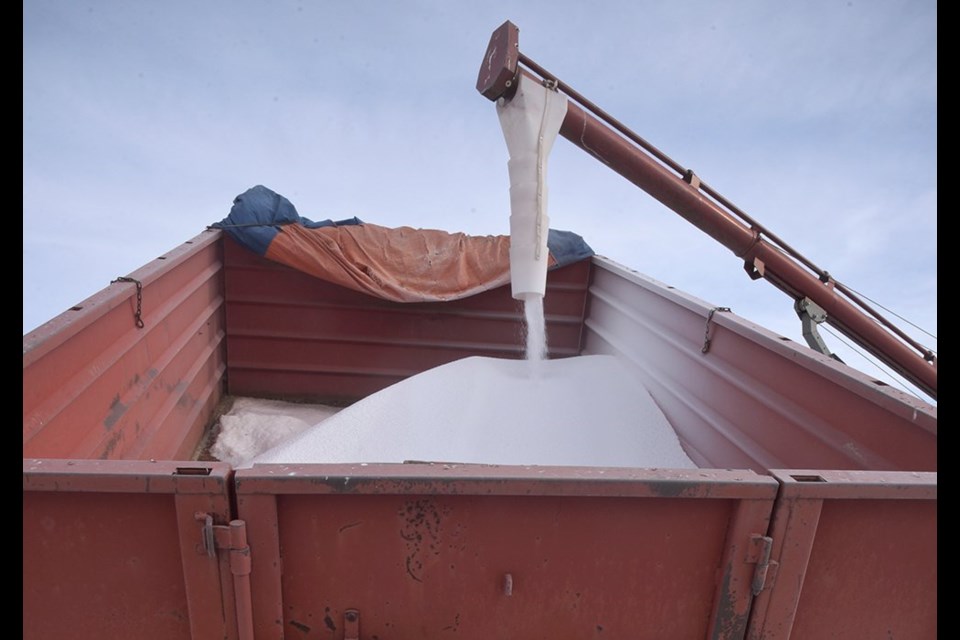"Over the next few months buy a good portion of your fertilizer needs and, if you can, bring it to farm to assure your supply," said the senior manager of fertilizer with Federated Co-operatives Limited.
All macro-nutrients are in short supply for a variety of reasons, resulting in the highest fertilizer prices in history.
Nitrogen fertilizer production is being curtailed all over the world due to a myriad of factors like sky-high natural gas prices in Europe, a hurricane in Louisiana and energy outages in China.
On top of that, supply chain logistics are a mess.
Panamax freight rates are double what they were at the beginning of the year, shipping containers are in very short supply and record numbers of vessels are anchored at ports around the world waiting to be loaded with products.
"It really does feel like a perfect storm right now on fertilizer and fertilizer availability," said Conacher.
Buying was light heading into September compared to previous years but it has really picked up since then as retailers and farmers realize just how tight supplies have become.
Manufacturers are already selling into January and February of next year, he said.
Retailers are not going to want to be long on product heading into spring because they realize there is a very good chance prices will tumble during the summer reset period.
"At that time retailers could be in quite a lot of trouble," he said.
Conacher encourages all farmers to conduct as much soil sampling as possible right now so they have a good understanding of what their needs will be come spring and to secure those supplies.
He noted that despite the highest urea prices on record it still pencils out as a cost-effective crop input due to "fantastic" grain prices.
Todd Lewis, president of the Agricultural Producers Association of Saskatchewan, cringes when he hears the advice to buy now.
"It really couldn't be a more difficult time for so many producers for cashflow," he said.
They just harvested a hugely disappointing crop and many are in the midst of settling contracts with buyers and crop insurance claims.
"In many situations it has never been a worse time to have to lay out a bunch of money early for fertilizer," said Lewis.
"It's a real conundrum, a real catch-22. Farmers in a lot of ways are in a wait-and-see mode."
Conacher said they better not wait too long, especially when it comes to a product like phosphate where Western Canada is completely reliant on imports from the United States and overseas suppliers like Morocco.
"If growers are going to wait on phosphate to see if they can buy it in the spring, there might be a serious risk of it not being there," he said.
Phosphate prices are already approaching the highs set in 2009.
Conacher recalls what happened earlier this year when shipments from Morocco showed up just in the nick of time for spring application.
He anticipates a similar close-call in 2022 unless the industry gets a head start on the ordering process and that means finding out how much farmers want sooner rather than later.
Suppliers like FCL are trying to be proactive on ordering but storage is limited and nobody wants to get caught with high-priced product.
The supply situation with nitrogen fertilizer products is not quite as risky because it is produced in Western Canada and therefore the industry is not as reliant on imports.
But there could still be a urea shortage come spring due to anticipated strong demand from the U.S. and Brazil, said Conacher.
Lewis said with fertilizer prices so high corn growers in the U.S. may cut back on acres and that could free up some supplies.
He also noted that if prices stay at today's levels growers in Western Canada may grow more pulse crops or simply cut back on fertilizer application rates.
He agreed with Conacher that farmers should be conducting soil tests this fall.
"A lot of the fertilizer that was put down last spring didn't get utilized by the crop," said Lewis.
"There may be quite a bit of residual there for next year's crop already."
Meanwhile, he is starting to worry about shortages of other inputs like glyphosate and even something like tires. He would hate to see seeding halted by flat tires across the Prairies next spring.




